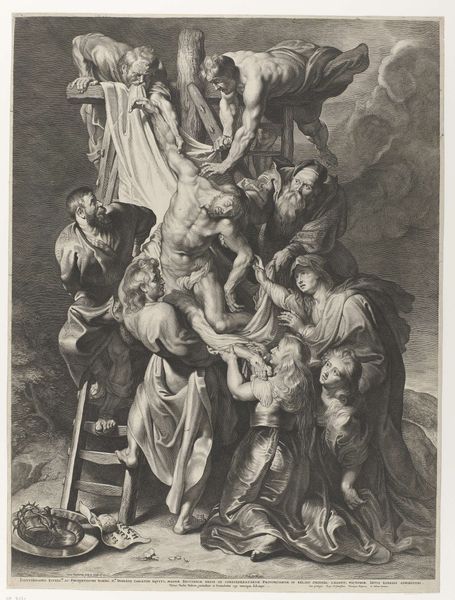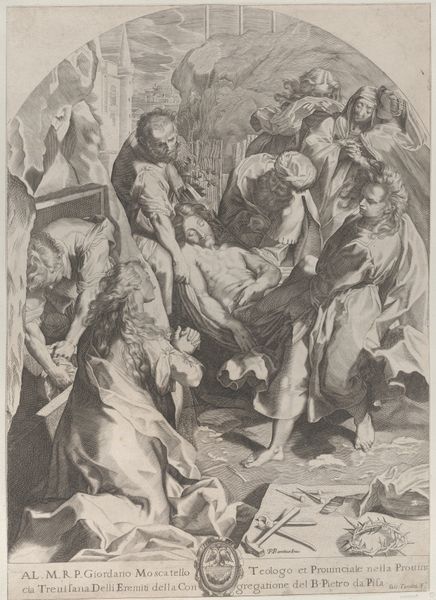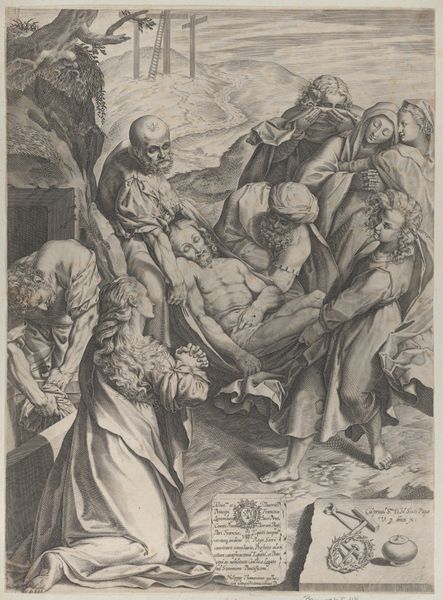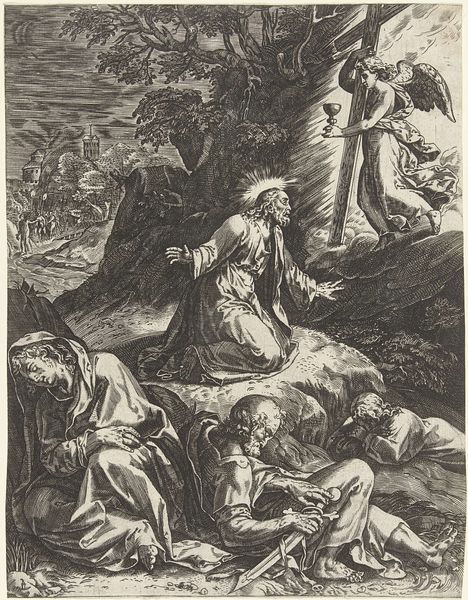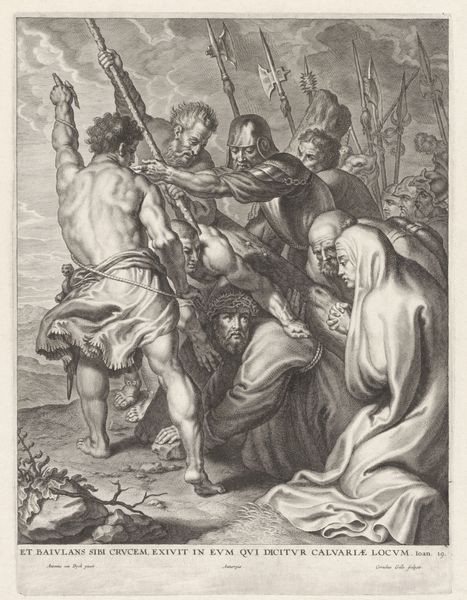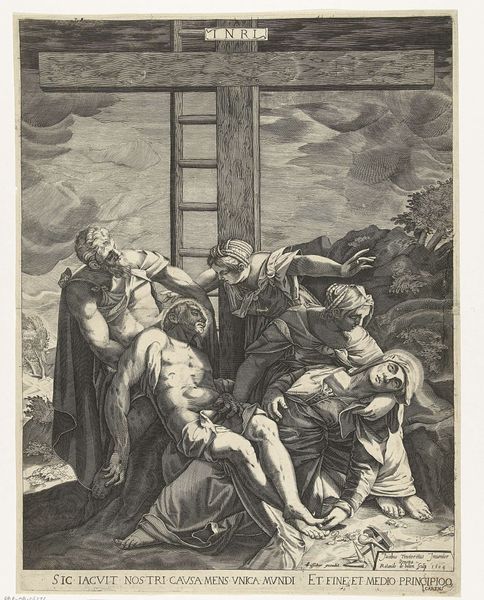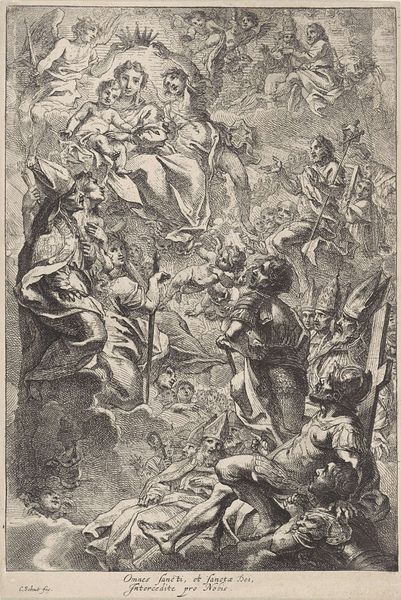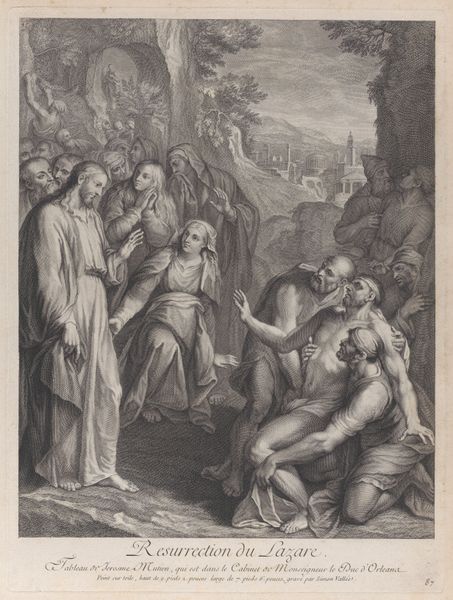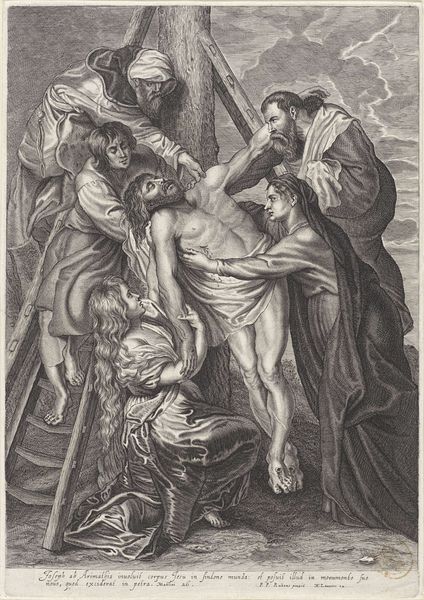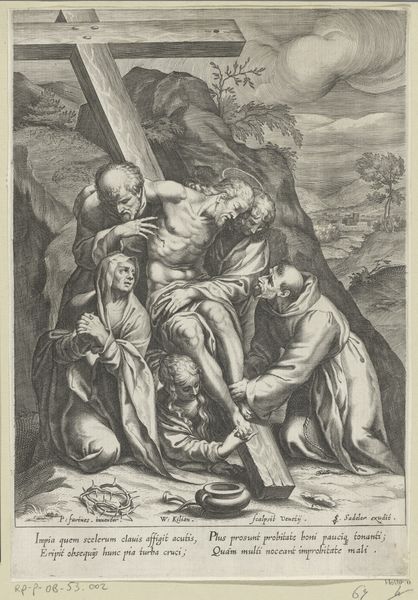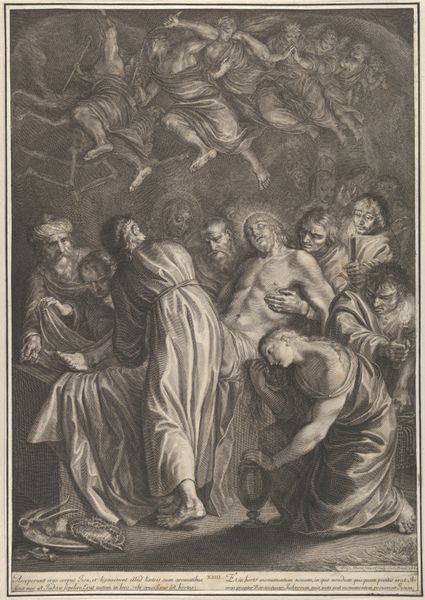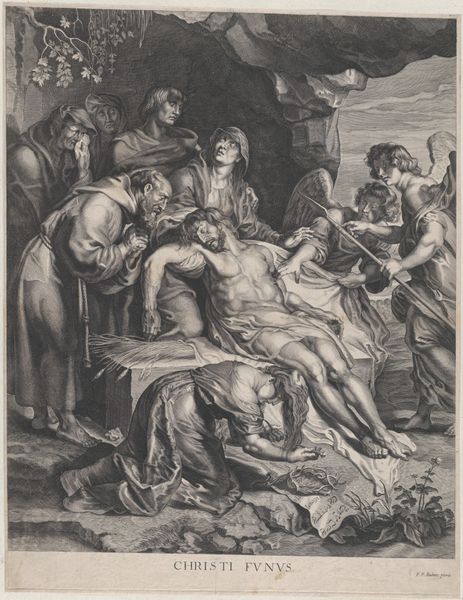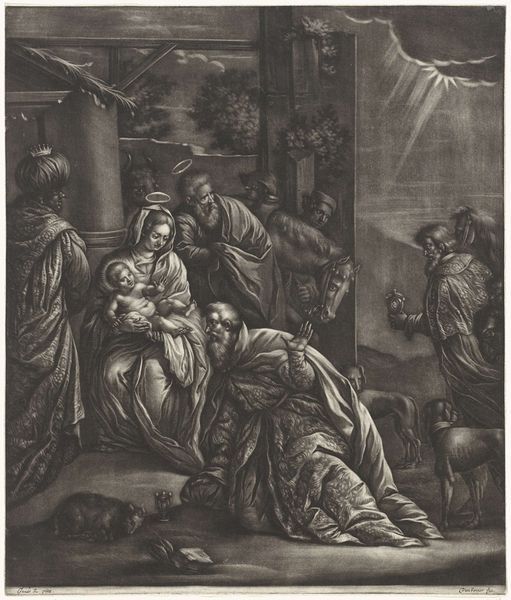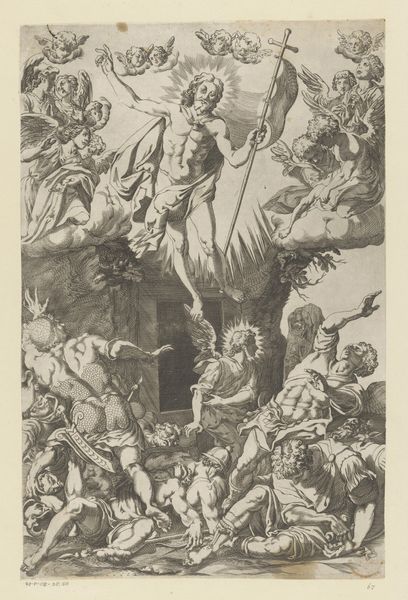
print, intaglio, engraving
#
baroque
# print
#
intaglio
#
old engraving style
#
landscape
#
figuration
#
history-painting
#
engraving
Dimensions: height 359 mm, width 224 mm
Copyright: Rijks Museum: Open Domain
Curator: The weight in this print, both physical and emotional, is immediately palpable. It feels like a snapshot of profound grief, doesn’t it? Editor: Indeed. What we have here is an engraving, dating back to 1615, titled “Graflegging van Christus,” or “The Entombment of Christ” in English. It was rendered by Johannes Sadeler II, a Flemish artist working within a baroque style, though there is also a clear landscape component visible here too. Curator: Yes, look at the meticulous use of line! It builds form through incredible density and variation of strokes, it’s just… phenomenal. See how the arch composition directs our gaze relentlessly downward, culminating in Christ's prone form. The fabric is equally astonishing. The angles are so exact that they have such gravity. Editor: And, speaking to that, it's imperative to address the context. Entombment scenes, particularly popular in the post-Renaissance period, served as a stark reminder of mortality but also a visual promise of resurrection—essential themes for the Counter-Reformation. Sadeler’s decision to position the viewer slightly above offers a specific perspective that is not strictly from within the event but not so far removed to cause indifference. Curator: I find it fascinating how the crown of thorns and tools of crucifixion are relegated to the bottom left. Their placement acts as a powerful visual metonymy. They have almost been discarded. Editor: Well, the intent is surely to encourage a contemplation of Christ's suffering but within the societal framework of its era. Remember that prints like these functioned as vital instruments for disseminating religious imagery amongst the masses. Each mark helps facilitate understanding to people for the scripture that it relays. Curator: Absolutely. Note how even the expressions, though limited by the medium, are expertly rendered to amplify the pathos. Observe the formal treatment of grief in their gestures and faces. Each reaction varies to make one whole picture. Editor: When considering Sadeler's decision-making within the artistic and religious climate of his time, what becomes evident is a carefully crafted narrative meant to evoke both personal and collective spiritual reckoning. Curator: In this light and shadow play, the visual experience becomes deeply evocative, encouraging not just passive viewing, but introspection. A quiet scene, a reminder that even in history you can have formalist interpretation and vice versa. Editor: An ideal print from a time of ideological ferment, designed to foster devotion and confirm belief through masterful visual communication.
Comments
No comments
Be the first to comment and join the conversation on the ultimate creative platform.
